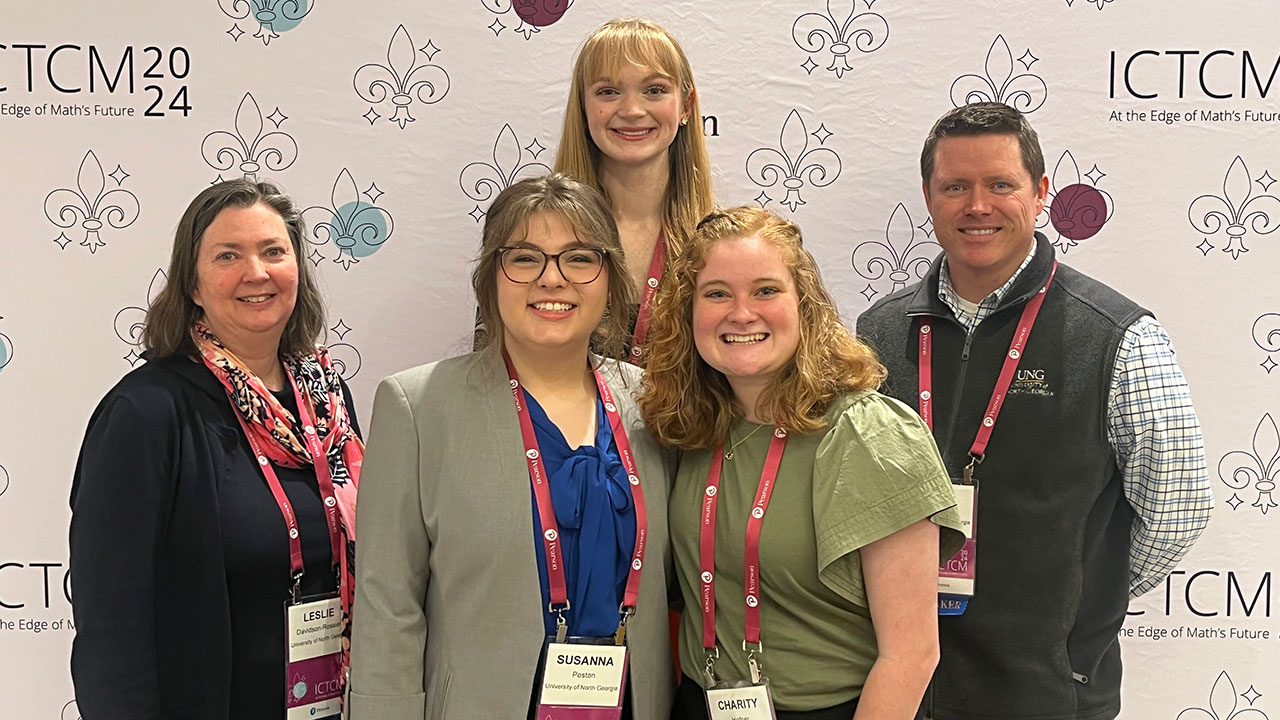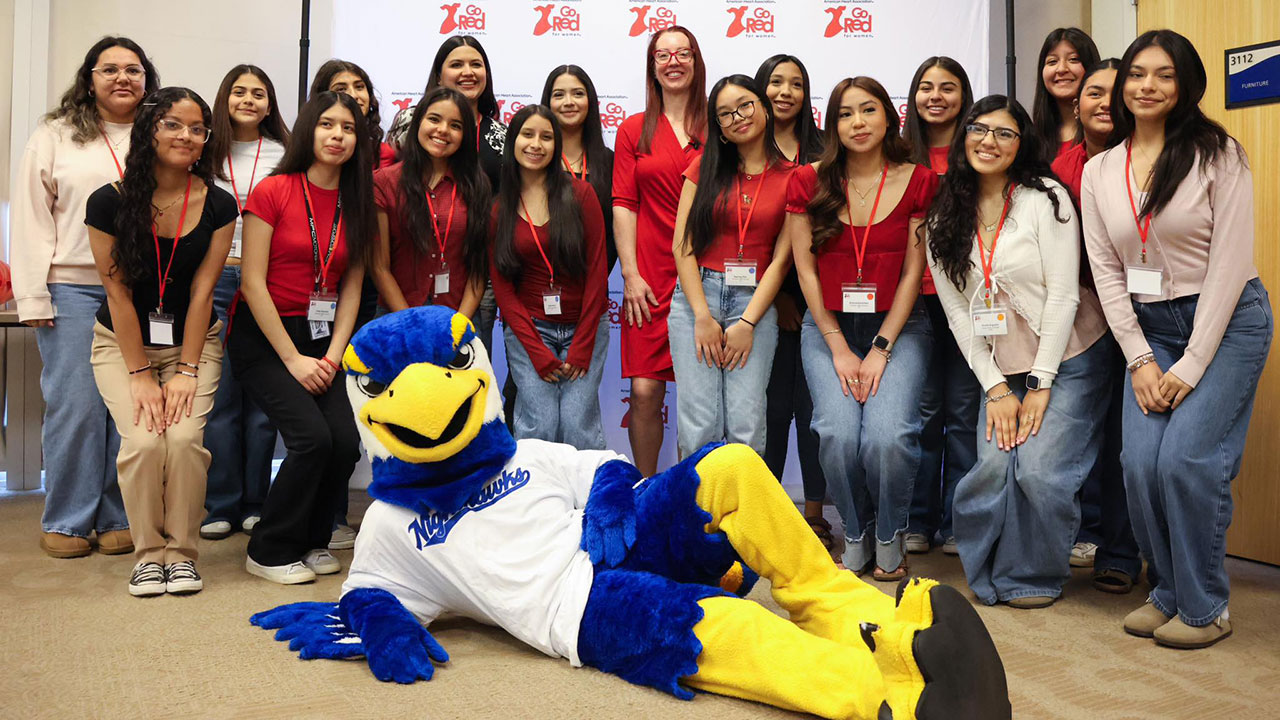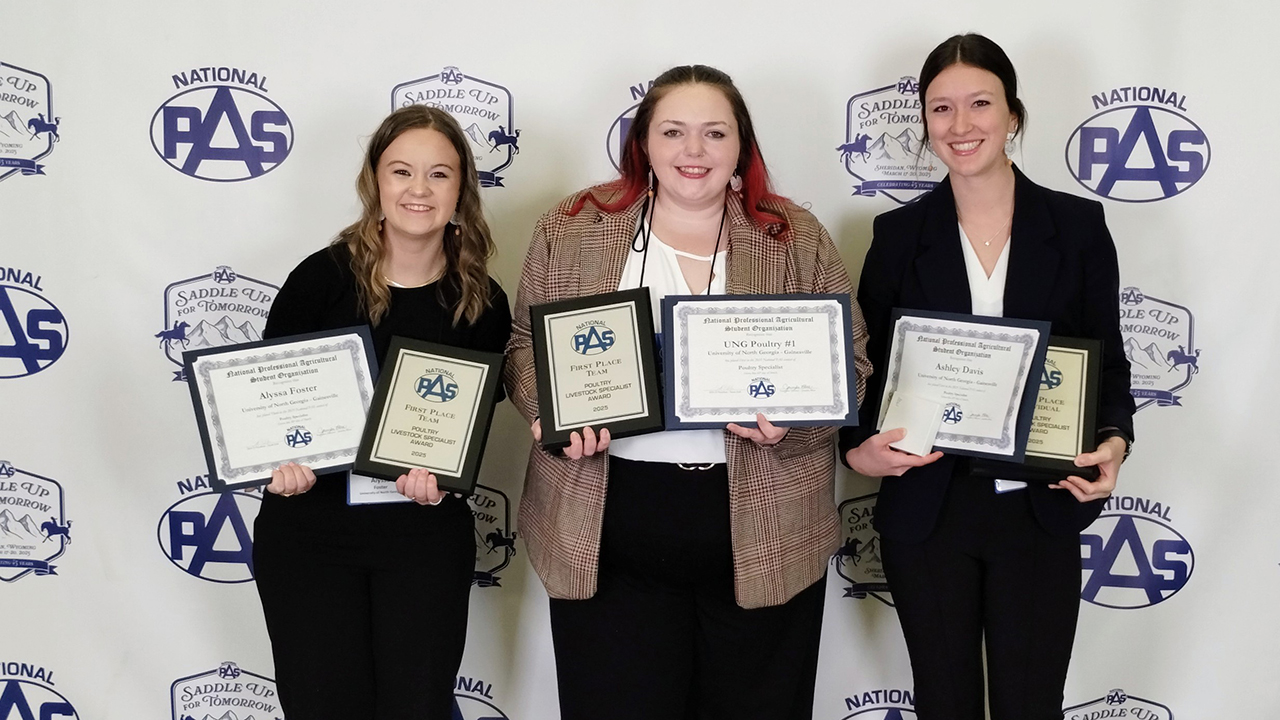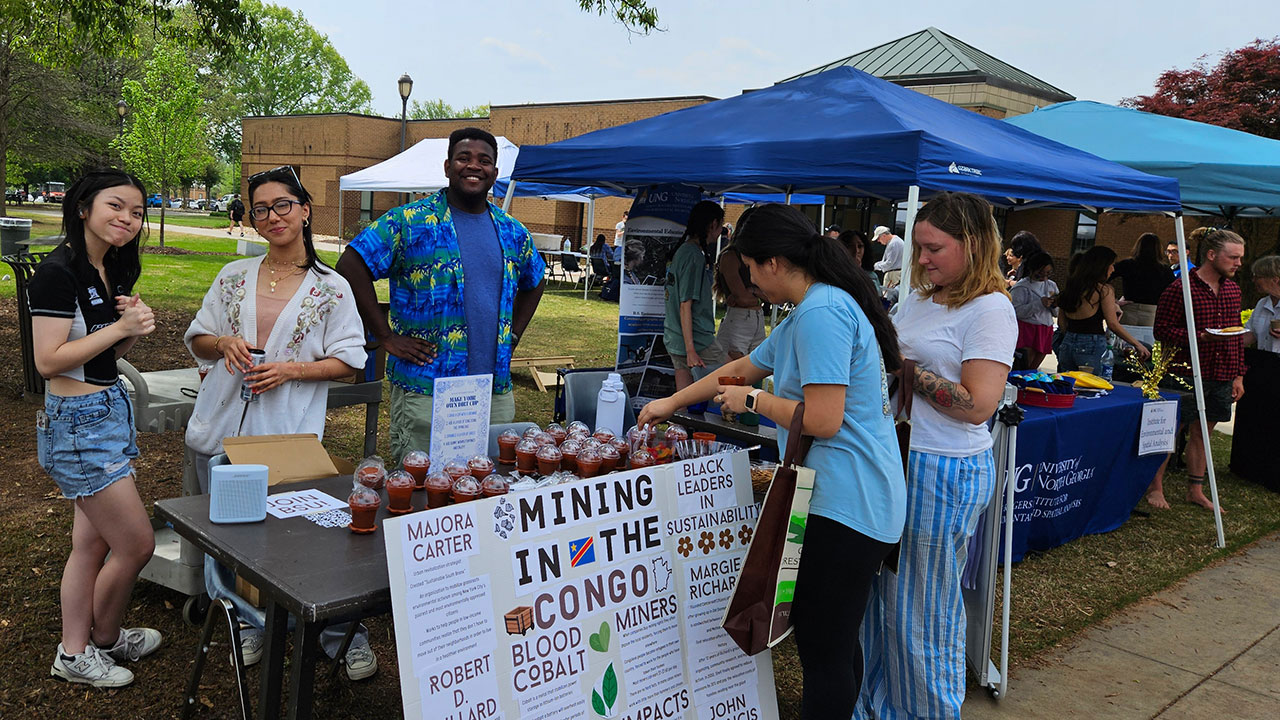ELIPSE conference offers new, innovative experiments to K-12 teachers

Article By: Staff
For the past five years, Brookwood Elementary School teacher Heather Hayes has looked forward to the Experiential Learning and Inquiry for Physical Science Educators (ELIPSE) conference at the University of North Georgia (UNG). And this year was no different.
"I get excited every year," said Hayes, who is a Science, Technology, Engineering and Math (STEM) lab teacher with Forsyth County School System. "I like the timing of the conference, because it is midway through the year, so the ELIPSE conference rejuvenates you for the rest of the year."
The ELIPSE 5.0 conference helped recharge more than 100 elementary, middle and high school science teachers with a range of sessions Jan. 26, in the Science Building on UNG's Gainesville Campus. Sponsored by UNG, the Georgia Science Teachers Association (GSTA), and Brenau University College of Education, the fifth annual conference demonstrated age-appropriate experiments for all students that can be used in the classroom.
"It gave the teachers the magic that they can use in the classroom to encourage the thirst for learning of the physical sciences in their own students," said JB Sharma, ELIPSE conference chairman and professor of physics at UNG.
Hayes agreed.
"I always feel like I come back with new ideas that I'm ready to try immediately," she said, explaining she integrated two new lessons into her curriculum that were direct results of last year's conference. "We used the Mission to Mars app. It allowed my students to see a 3D image of the Mars rover and see how it worked."
During the ELIPSE conference, teachers received hands-on training during the one- or two-hour sessions, said Frank Lock, a part-time faculty supervisor in UNG's College of Education. He explained the teachers become students for a day, learning the concepts and ways to implement them in experiments.
"Understanding the science is important, because they have to teach it to their own students," said Lock, who initiated the ELIPSE conference with the assistance of Sharma, faculty members in the College of Education, and GSTA members. "And we've been told this is the best of the best science educator conferences."
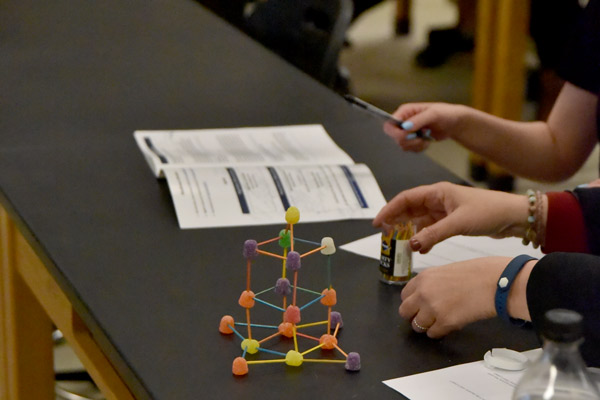 |
|
Elementary, middle and high school teachers become students for a day, learning the concepts and ways to implement them in experiments. Teachers constructed a wind-resistant structure made of toothpicks and gum drops. |
Hayes said becoming the student for one day is the fun part of the conference. At a previous conference, she learned to build a robotic hand and implemented it into her science program. Now, her fifth-grade students look forward to the project.
"They get to plan, design, build and test it," she said. "Those robot arms are a favorite. I don't have to pull teeth to get them interested. They love that whole process."
Supplying teachers with these innovative lessons and helping with any supplies makes ELIPSE conference unique, said Dr. Mark Spraker, professor of physics at UNG.
"It showcases easy, cost-efficient ways to teach students, opportunities to play with new science equipment and develop new experiments," he said.
The professional-development conference also creates a common space for the exchange of knowledge, practice, and ideas where educators and UNG faculty learn from each other, said Dr. April Nelms, head of the department of teacher education at UNG.
"Hosting the ELIPSE conference also connects with UNG's mission to serve our region," she said. "Our professional learning communities near our campuses create vibrant partnerships that benefit all of our students."
The kindergarten through 12th-grade students who learned the lessons also benefit from the conference.
"By giving young students a foundation in the physical sciences, we are setting them up for success and lifelong learning in STEM disciplines," said Sharma, assistant chair of the physics department.
